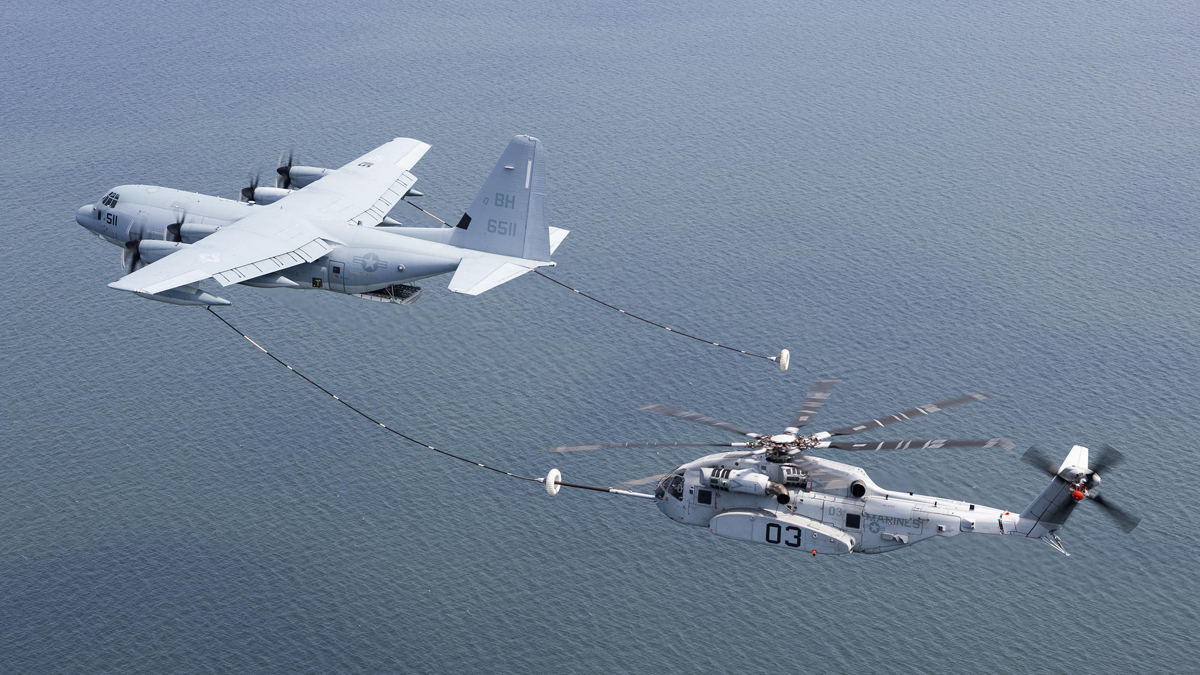Click Here to View This Page on Production Frontend
Click Here to Export Node Content
Click Here to View Printer-Friendly Version (Raw Backend)
Note: front-end display has links to styled print versions.
Content Node ID: 401890
During June the Lockheed Martin/Sikorsky CH-53K King Stallion undertook its first period of sea trials. This represents a significant milestone to the delayed program to field the three-engined heavylift helicopter aboard the assault ships of the U.S. Navy’s “Gator Navy”.
Overseen by Naval Air Systems Command at NAS Patuxent River, Maryland, the trials took place aboard USS Wasp, a landing helicopter dock (LHD) vessel. “I’m very pleased with how the ship tests went,” said Colonel Jack Perrin, H-53 helicopters program manager with program office PMA-261. “We were able to assess the K taking off and landing day, night, and with night vision goggles and it performed extremely well.”
Tests performed during the two weeks at sea included launch and recovery, rotor start and shutdown, blade-folding, and shipboard compatibility testing, with a total of 364 launch/recovery cycles being completed. Trials were undertaken in various wind speeds and with varying wind directions in relation to the helicopter. Operations were conducted from all of Wasp’s deck landing spots.
“The bulk of the testing was in launch and recovery,” said Perrin, “and we nailed it every time, no matter what the wind/sea conditions were. The 53K is now a “feet-wet” warrior from the sea.”
As well as flying trials, the King Stallion was also put through ship compatibility tests that involved towing the helicopter around the deck and in the hangar. Maintenance was carried out on board the vessel, and the various chaining and tie-down procedures were verified.

The initial sea trials followed a test in April that demonstrated the CH-53K’s ability to refuel inflight, a vital attribute in its role of providing long-range logistics support for the U.S. Marine Corps. During a 4.5-hour flight the CH-53K was flown behind a Lockheed Martin KC-130J to assess its performance in the turbulent wake of the tanker, before the helicopter’s probe engaged the drogue basket in a dry contact, a test performed numerous times with increasing closure speeds.
With earlier issues now behind it, the CH-53K is moving towards its initial operational test and evaluation trials to be undertaken next year. Fleet deployment with the Marine Corps is slated for 2023-24 to begin the replacement of the earlier CH-53E. The principal role is to move heavy equipment, supplies and armament between ship and shore in support of Marine operations ashore.